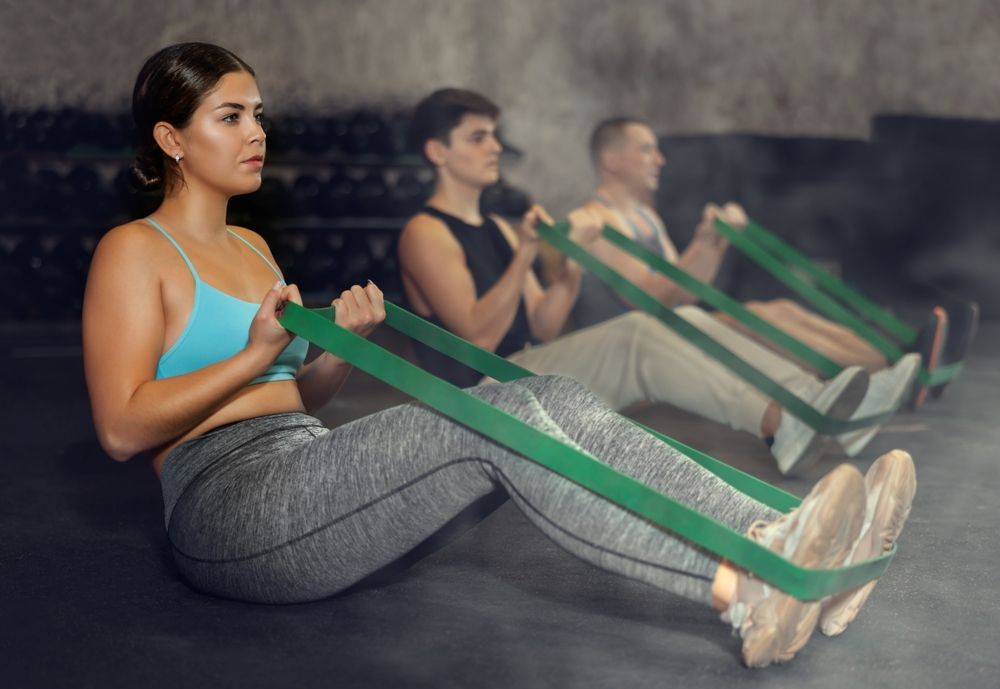
Resistance bands can be a fantastic addition to your workout routine, helping to improve strength, muscle tone, balance, flexibility, and functional fitness. They can also make your workouts more challenging. Plus, they’re portable, so you can train anywhere. However, before you start, it's crucial to be aware of common mistakes people make when using resistance bands—and how to avoid them.
Proper technique is key to preventing injuries while working with resistance bands. “Unlike other equipment, resistance bands create tension based on the force we apply to them,” says Ash Wilking, CPT and Tonal strength coach. “If used incorrectly, they can slip, over-engage muscles, and potentially restrict proper movement and range of motion.”
By learning the common mistakes people make with resistance band training, you'll help avoid injury and maximize the effectiveness of your workouts.
Not using the appropriate resistance

Choosing the right level of resistance is crucial for achieving your fitness goals. Larger muscles need more resistance, while smaller muscles, such as those in the shoulder complex, typically require lighter resistance.
“Selecting the appropriate resistance depends on your current fitness level, technique, and range of motion,” explains Ash Wilking. “It’s best to begin with a lighter band to assess these factors before increasing resistance. Tracking which bands you use for specific exercises will help ensure efficient and effective workouts moving forward.”
Not knowing the required range of motion

Knowing the proper range of motion for each exercise is crucial to pinpointing how much resistance you can add.
"It's important to remember that the resistance will get heavier as the band's tension increases. Therefore, overloading the concentric phase of the movement," Wilking explains. "Having smaller and longer resistance bands and various weights will allow you to choose both the correct resistance and the correct length of the band."
Not using correct form
No matter what exercise you’re doing or which fitness tools you’re using, maintaining proper form is essential.
“Understanding the exercise you’re aiming to perform is key to mastering the movement pattern once resistance is applied,” says Ash Wilking. “Resistance bands create a unique type of tension compared to cable machines or free weights. When incorporating resistance bands, it’s important to ensure that you can still perform the same movement pattern effectively.”
Not considering the speed in each exercise

Changing the resistance during an exercise will also affect the level of effort required.
“Often, people focus on the effort of stretching the band (concentric phase) but fail to control it as it returns to its original length (eccentric phase),” explains Wilking. “Letting the band snap back quickly not only misses the chance to strengthen the eccentric portion of the movement but also increases the risk of injury.”
Not keeping tension on the band

The tension in the resistance band between reps can vary depending on the exercise and the length of the band.
“You want to make sure there’s resistance throughout the entire range of motion to maximize the effectiveness of the workout and prevent injury,” says Wilking. “Starting an exercise without proper tension can result in a sudden, forceful pull once resistance kicks in, which could lead to injury.”
Not engaging your core

Engaging your core is essential when working with resistance bands.
“It’s important to keep your core activated to ensure the anchor point stays stable throughout the exercise,” says Wilking. “Not only does core engagement help prevent injury, but it also strengthens your core, even if you’re not specifically targeting it in the exercise.”

